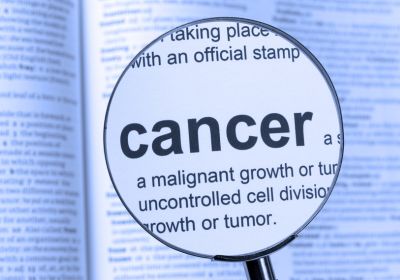Cancer remains a pivotal health challenge in America, consistently ranking as one of the leading causes of death. Despite advancements in medical research and treatment, the battle against this complex disease continues, with varying impacts across different segments of the population. This article delves into the intricate world of cancer in the United States, focusing on three critical aspects: the prevailing statistics of cancer incidence, the identification of specific demographic groups at increased risk, and the essential steps individuals can take towards proactive cancer prevention. Our exploration aims to shed light on the multifaceted nature of cancer risks and the strategies available for mitigation and prevention.
Contents
Cancer Prevalence Statistics in America
Cancer, a formidable health adversary, continues to have a significant impact on the American population. According to recent data, millions of new cancer cases are diagnosed each year, signaling the pervasive nature of this disease. Breast, lung, prostate, and colorectal cancers top the list, accounting for a substantial proportion of all new diagnoses.
The cancer prevalence rate, which represents the number of living individuals who have had a diagnosis of cancer at some point in their lifetime, has seen a gradual increase over the years. This rise is partly attributable to the aging population, as cancer risk escalates with age. Additionally, lifestyle factors, such as smoking, poor diet, and physical inactivity, coupled with environmental exposures, contribute significantly to the heightened cancer rates.
Trends over recent years present a complex picture. On one hand, advances in cancer research and treatment have improved survival rates for several cancer types, leading to a growing number of cancer survivors. On the other hand, certain types of cancers have seen an increase in incidence. For instance, lung cancer rates, closely tied to smoking habits, have shown variable trends, decreasing among men but increasing among women, reflecting historical patterns in smoking behaviors.
Vulnerable Demographics: Disparities in Cancer Risks
Cancer affects various demographic groups differently, revealing significant disparities in risk and outcomes. Understanding these disparities is key to developing targeted prevention and treatment strategies.
Socioeconomic and Lifestyle Factors
Certain demographic groups, particularly those in lower socioeconomic strata, face higher cancer risks. This increased vulnerability is partly due to lifestyle factors such as higher rates of smoking, obesity, and limited access to nutritious food. Additionally, these groups often experience higher exposure to environmental carcinogens, like pollutants and hazardous work conditions. Socioeconomic status also influences educational opportunities, which in turn affect health literacy and awareness about cancer risks and prevention strategies.

Genetic Susceptibility and Healthcare Access
Genetics play a crucial role in cancer risks. Certain ethnic groups are predisposed to specific types of cancer due to hereditary factors. For example, African American men are at a higher risk for prostate cancer, while Ashkenazi Jewish women have a higher prevalence of BRCA gene mutations, increasing their risk for breast and ovarian cancers.
Access to healthcare greatly impacts these demographics. Those with limited access to healthcare services often miss out on early screening and timely diagnosis, which are crucial for effective treatment. Regular screenings, like mammograms and colonoscopies, are vital for early detection but are less accessible in lower-income communities. Additionally, these communities often face barriers in receiving quality treatment and follow-up care, contributing to poorer outcomes.

These disparities underscore the need for a multifaceted approach to cancer care that considers the unique challenges faced by different demographic groups. Addressing these disparities requires not only medical interventions but also policy changes and community-based initiatives aimed at reducing risk factors and improving access to comprehensive healthcare services.
Proactive Prevention: Reducing Cancer Risks
Adopting proactive measures can significantly reduce the risk of developing cancer. This approach encompasses lifestyle changes, regular screenings, and learning from successful prevention strategies.
Embracing a Healthy Lifestyle
Lifestyle modifications are pivotal in cancer prevention. A balanced diet rich in fruits, vegetables, whole grains, and lean proteins, while limiting red and processed meats, can lower the risk of various cancers. Regular physical activity is equally important; engaging in at least 150 minutes of moderate exercise per week can reduce the risk of breast, colon, and other cancers.
Additionally, avoiding tobacco in all forms and limiting alcohol intake are critical, as tobacco use is the single largest preventable cause of cancer worldwide, and excessive alcohol consumption is linked to several cancers.

The Role of Regular Screenings and Early Detection
Regular screenings play a vital role in detecting cancer early when it is most treatable. For example, mammography has significantly reduced breast cancer mortality by detecting tumors at earlier stages. Similarly, colonoscopies have been effective in identifying colorectal cancer early. These screenings are especially important for individuals with a family history of cancer or those belonging to high-risk demographic groups. Public awareness campaigns emphasizing the importance of regular screenings have shown success in increasing participation rates and early detection.
Success Stories in Cancer Prevention
Success stories abound in the realm of cancer prevention. For instance, HPV vaccination programs have led to a substantial decrease in cervical cancer rates among vaccinated populations. Another notable success is the reduction in lung cancer rates following aggressive anti-smoking campaigns and public smoking bans. These cases demonstrate the impact of preventive measures and the potential for public health initiatives to reduce cancer incidence.

Implementing these proactive strategies can significantly diminish the risk of developing cancer. By combining personal lifestyle changes with broader public health initiatives, it’s possible to create a more comprehensive approach to cancer prevention.
Conclusion
Understanding and addressing the multifaceted aspects of cancer—its prevalence, the disparities affecting vulnerable demographics, and the importance of proactive prevention—is crucial in the fight against this pervasive disease. By acknowledging the impact of socioeconomic, genetic, and lifestyle factors, and emphasizing the need for regular screenings and lifestyle modifications, we can pave the way for more effective strategies in cancer prevention and treatment. The journey towards reducing cancer risks and improving outcomes requires a concerted effort from individuals, communities, healthcare providers, and policymakers, united in the mission to conquer this formidable health challenge.



